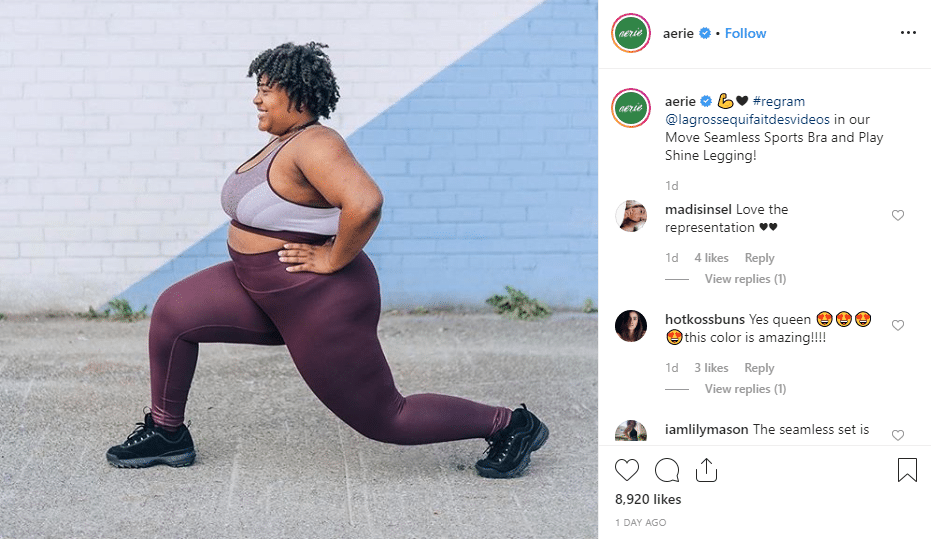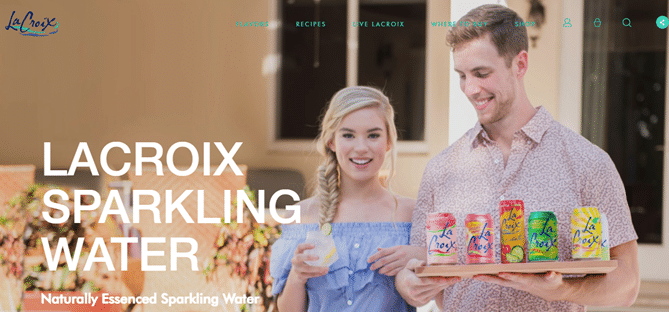Peer to peer marketing is a form of marketing where your customers promote your business for you by sharing and referring. Peer to peer marketing is a powerful tool that can give you incremental results over a period of time, provided you’ve covered all the bases in terms of product, distribution, and customer service.
In this article, we will cover what peer-to-peer marketing is, why it’s so powerful, and 8 steps to help you develop a peer-to-peer marketing strategy. We will also break down 3 examples of peer-to-peer marketing in action and the key learnings from each.
What is peer-to-peer marketing?
Peer-to-peer marketing (otherwise known as P2P marketing) is a type of word-of-mouth marketing that takes place whenever customers recommend a brand to their peers. In everyday language, peers are people you trust, like your friends, close professional associates, or family members.
P2P marketing is a holistic blend of two tried-and-tested marketing methodologies – building mutually satisfying and long-lasting relationships, and leveraging trust to build brand loyalty and create brand ambassadors.
Referral marketing, positive social media posts, and reviews/testimonials from customers are some examples of peer-to-peer marketing at work in the context of a real-life business environment.
Why is peer-to-peer marketing so powerful?
To understand why peer-to-peer marketing is so powerful today, it’s important to take a look at some key statistics:
- Word-of-mouth recommendations from friends and family are the most influential in purchasing decisions, as 84% of global respondents in an online survey said this source was the most trustworthy. [Nielsen]
- 76% of consumers believe the content that average people share is “more honest than advertising from brands.” [Olapic]
- Marketers rate referrals as the 2nd-highest source of quality leads. [Forbes]
Based on this research, we can tell the following about the strength of peer-to-peer marketing:
- People trust the recommendations and opinions of friends more than they trust messages that come from a brand.
- A peer’s recommendation builds social proof and provides the validation someone needs, especially as they start to research a brand.
- When their peers recommend your brand, a person is more likely to purchase and stick with your brand.
8 key steps to develop a peer-to-peer marketing strategy
There are several different ways of developing an effective P2P marketing strategy. Here are 8 key steps that we recommend you follow for the best results:
1. Have a product/service worth recommending
Having a product/service worth recommending is a back-to-basics strategy that will help you reap rich dividends with your P2P marketing efforts. Not every business has a winning product that hits all the right notes. Review your product and service based on existing reviews and market research to identify if it’s ready for next-level marketing.
For example, if your customer service or customer experience journey is not up to scratch, it’s critical to set things right before you go for peer-to-peer marketing. Remember that there is power in numbers. If your customer service stinks, and you don’t do anything about it, large-scale negative reviews will sink your business faster than the Titanic.
2. Know your target audience and what they desire
Another back-to-basics strategy, where the results will only amplify with peer-to-peer marketing, is knowing your target audience and their expectations and desires. There is a 2-part formula to address this within the context of peer-to-peer advertising:
- Know the niche, demographics and pain points of the new customers you want to attract. Create products and services that are tailored to successfully address the pain points. Also, perform competitor research to find out what your competitors are doing right, what they’re doing wrong, and how you can capitalize.
- Brainstorm ideas to encourage sharing from existing customers, who will attract new customers on auto-pilot simply by the act of sharing and spreading brand awareness.
3. Turn customers into brand loyalists and evangelists, so they’ll naturally share your brand
In today’s business world, getting the sale and retaining customer loyalty are no longer the end-goals. You also now need to turn your customers into brand loyalists and evangelists who are so happy with your offerings, they’re happy to spread the news and increase your footprint.
Here are some practical tips that you can implement to make use of this strategy successfully:
- Respond to customer feedback so they know you listen: You absolutely need to respond to every single comment and post to let your customers know that you genuinely care about their opinions. It’s also important to resolve complaints and take on feedback from a perspective of ‘How can I make this a better experience for the consumer?’.
- Offer a unique experience, far above competitors: It’s a crowded marketplace. Unless your product or service is a significant gamechanger, you still have to stand out and be relevant. Look at providing unique experiences for existing or potential customers that they’re simply not able to get elsewhere.
- Consider loyalty programs and perks: Give your loyal customers a reason to stick to your brand. Provide benefits for regular buyers and sharers. Offer deals, discounts, and loyalty coupons – the more custom, the better.
- Consider creating a beneficial online brand community, where customers can interact with other customers and share insights: Regardless of the size of your brand, you can still create an online community where customers can engage with other customers and with your brand. It should be a safe, secure, and user-friendly space where they can share their thoughts and ideas, participate in developing your products, ask questions and get help.
4. Know when and how to ask customers to share
There is an art to the process of asking for shares or referrals. You don’t want to come across as needy or desperate but at the same time you have to strike when the customer appears to be the happiest with the product or service received.
You also have to make sure you’re reaching out to the right people at the right time. Remember to offer rewards and incentives.
5. Encourage UGC (user generated content) and other social media sharing among customers
Create contests that encourage users to share their content featuring your products, services, and brand hashtags through social media. Also, remember to respond to feedback (even if it’s nothing more than a simple thank you) so that customers are left feeling positive after interacting with your brand.
6. Consider recruiting nano-influencers and micro-influencers
You don’t necessarily always have to approach the big-wigs to start building your referral program. You can make use of nano- and micro-influencers as well. Nano-influencers have between 1,000 and 10,000 followers, while micro-influencers have between 10,000 and 50,000 followers.
While nano- and micro-influencers may not have the huge fan following that larger social influencers have, they are more likely to have a much stronger influence on followers because of a much closer relationship. They are often seen as trusted peers for their audience.
Read our guide for tips and best practices on finding and recruiting the right micro-influencers for your business.
7. Start a referral program
Consider starting your own referral program to reward peer recommendations with incentives that motivate customers to share. Make sure your referral program is easily accessible by making it available across multiple social media channels. The interface should also make it an easy experience for your customers to share.
8. Have a plan to track the word of mouth you generate
You always need to have some form of tracking mechanism in place regardless of the type of marketing you’re engaging in. You want to be able to measure your results and most importantly identify what went wrong for corrective action and scale up what went right.
The good news is, there are plenty of referral software tools in the market that can make the end-to-end process of tracking and growing word-of-mouth referrals easy and efficient. You may want to supplement referral software with brand mention tools, so you can track social media sharing and other online recommendations that mention your brand and related terms.
Peer-to-peer marketing examples
Here are 3 examples of peer-to-peer advertising that you can use as sources of inspiration for your own marketing campaigns.
Referral program: EveryPlate

EveryPlate is a flexi-subscription meal service that delivers full meals to your doorstep at affordable prices. Their referral program is simple and varied. In the traditional program, when you share, both you and your referral get $20, which you can easily feed back into the monthly subscription payment.
You also get free meal boxes to offer to friends after you’ve purchased a few boxes for yourself. The referrals can be shared via email, through Facebook, or by using the referral link. EveryPlate has a great product supported by a simple hassle-free referral program which makes it easy to both buy and share. We like this very much.
UGC campaign: Aerie’s #AerieREAL campaign

Aerie, a woman’s clothing company and sub-brand of American Eagle launched the #AerieREAL campaign on Instagram, tagging it to not one but two worthy causes.
The campaign launched with a bold announcement that they would no longer be airbrushing/retouching any of the models in their marketing campaigns, a nod to promoting healthier self-esteem and confidence in girls while standing up against unrealistic portrayals of beauty.
The campaign asked women to share untouched images of themselves wearing Aerie products with the hashtag #AerieREAL on Instagram and Twitter, and additionally promised to donate $1 for each woman to the National Eating Disorders Association.
The #AerieREAL campaign is an example of how to leverage user-generated content while promoting worthwhile causes that supported the target demographic. This one was a simple and yet profoundly effective p2p marketing campaign.
Nano-influencer campaign: LaCroix

LaCroix sparkling water is a great example of how to leverage the twin powers of social media marketing and micro/nano influencers to sell products specifically catering to the millennial segment.
LaCroix initially does searches on Instagram for UGC posts that tag the brand (e.g. #LiveLaCroix) or mention the brand within the content of the post. They review the profiles to see if the users behind them have lower follower counts, given that these users often have the highest engagement rates.
The brand then reaches out to the influencers and provides product vouchers or deals in exchange for the influencer posting an image with a LaCroix product.
Wrapping things up
Peer-to-peer marketing is a great step to take if you’re ready to level up your marketing efforts. Use the steps detailed above to develop winning campaigns and measure results to see where you can do things better. When peer-to-peer marketing is done right, your customers can end up becoming your biggest and best brand ambassadors.




